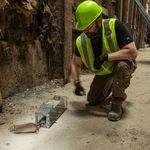1. It’s Really About the Native American Genocide
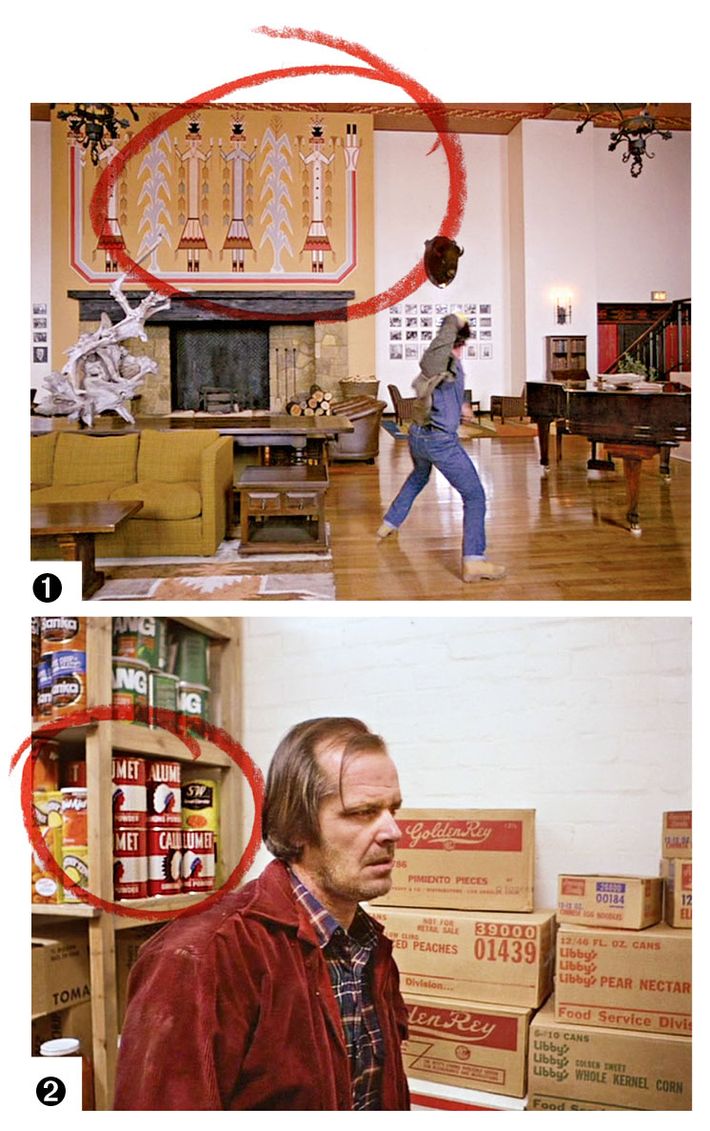
Theorist: Bill Blakemore, television correspondent, author.
Theory: The film is about the horrible crimes perpetrated on Native Americans by whites.
Evidence: In the movie (but not the Stephen King novel on which it was based), the Overlook Hotel is said to be built on a Native American graveyard. There are Native American artifacts and designs throughout the hotel (1); the hotel’s pantry, which figures in important scenes, is well stocked with Calumet baking powder (2), whose labels prominently feature an American Indian. (Calumet means “peace pipe,” and the cans symbolize the broken peace pipe, both between white men and natives and between Jack and his family.) Blakemore posits that The Shining suggests we can only escape this “nightmare of history” by retracing our steps—just as Danny Torrance does in the hedge maze.
2. It’s Really About the Nazi Holocaust
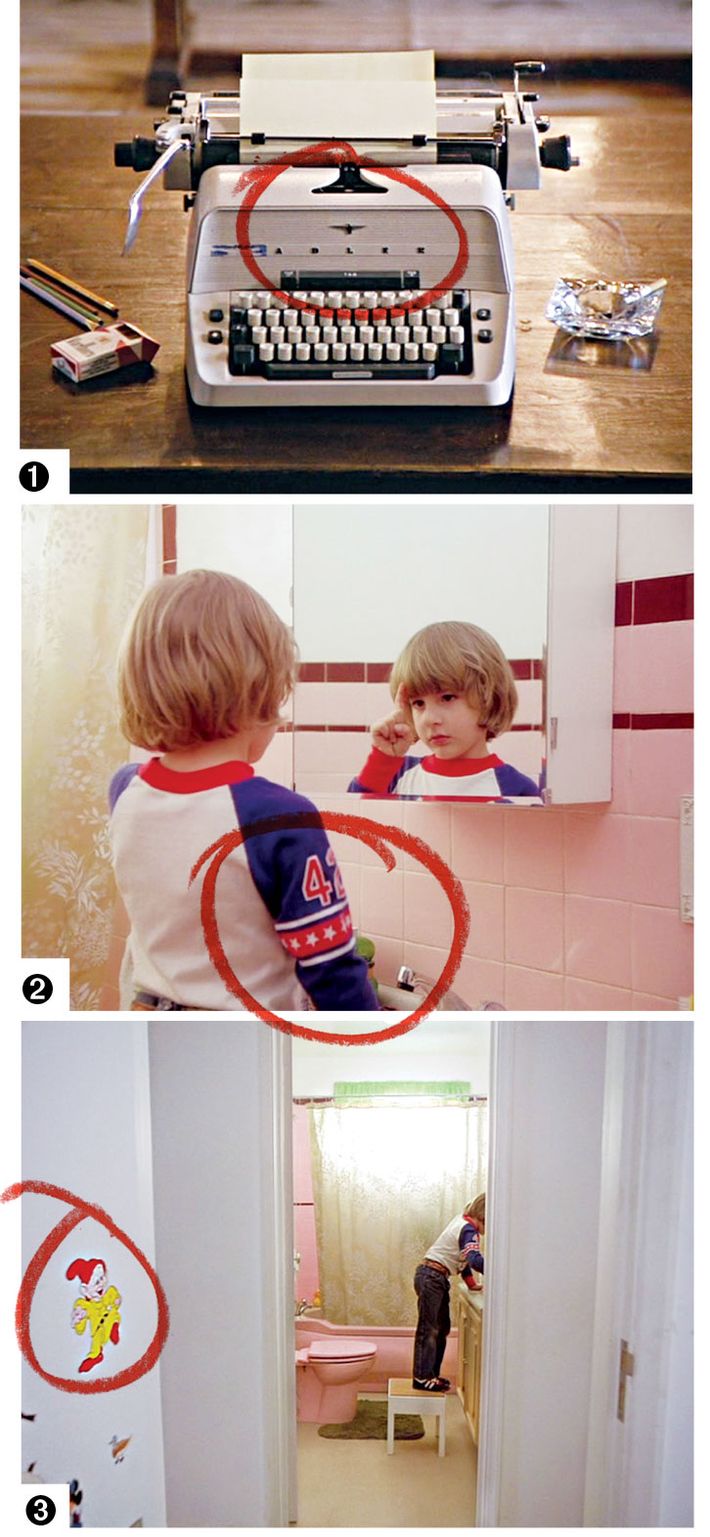
Theorist: Geoffrey Cocks, professor of history, Albion College, Michigan.
Theory: The film is an allegory about coming to terms with Hitler’s extermination camps.
Evidence: Jack Torrance’s Adler typewriter (1) is manufactured in Germany: “a bureaucratic killing machine,” Cocks said in one interview. The number 42 is on Danny’s sweatshirt (2); Wendy Torrance swings the bat 42 times at her husband; 1942 was the year of the Final Solution, and 42 has been used as shorthand to refer to the Holocaust. The film has abundant eagle imagery, symbolizing state power. After Danny has his first vision of the elevators gushing blood, a sticker of Dopey the Dwarf (3) on his bedroom door disappears: “Before,” Cocks says, “Danny had no idea about the world. And now, he knows. He’s no longer a dope about things.” Kubrick was indeed researching a proposed Holocaust film around this time.
3. It’s Really About the Minotaur in His Maze
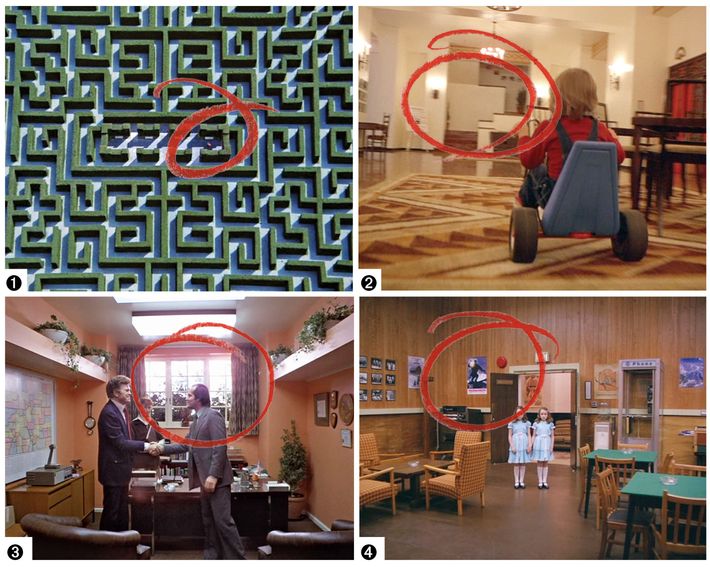
Theorist: Juli Kearns, playwright, novelist.
Theory: The film is based on the Greek myth of the Cretan half-bull, half-man at the center of a labyrinth, slain by Theseus.
Evidence: The hedge maze (1); the labyrinthine architecture of the hotel (2); the “impossible window” (3) in the office of Jack Torrance’s boss; several images of the Minotaur, notably the Monarch skiing poster (4) on the wall in the game room.
4. It’s Really About the Faked Apollo Moon Landing
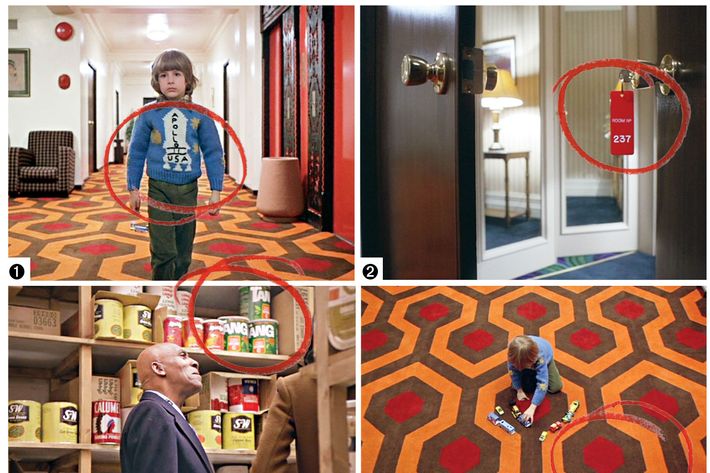
Theorist: Jay Weidner, author, filmmaker, independent scholar.
Theory: Weidner and others believe that the moon landing witnessed on television was faked, created on a soundstage by Stanley Kubrick in collusion with the U.S. government; Weidner believes that the film is Kubrick’s attempt to come to terms with his supposed involvement.
Evidence: Danny wears an Apollo 11 sweater (1); Room 237 (2) represents the moon-landing stage where Kubrick supposedly worked—the moon is about 237,000 miles from Earth; the prevalence of Tang cans (3) (created for astronauts) in the hotel’s pantry; the pattern on the carpet (4) where Danny plays matches that of Launch Pad 39A, from which the Apollo rocket took off.
*This article originally appeared in the March 25, 2013 issue of New York Magazine.





